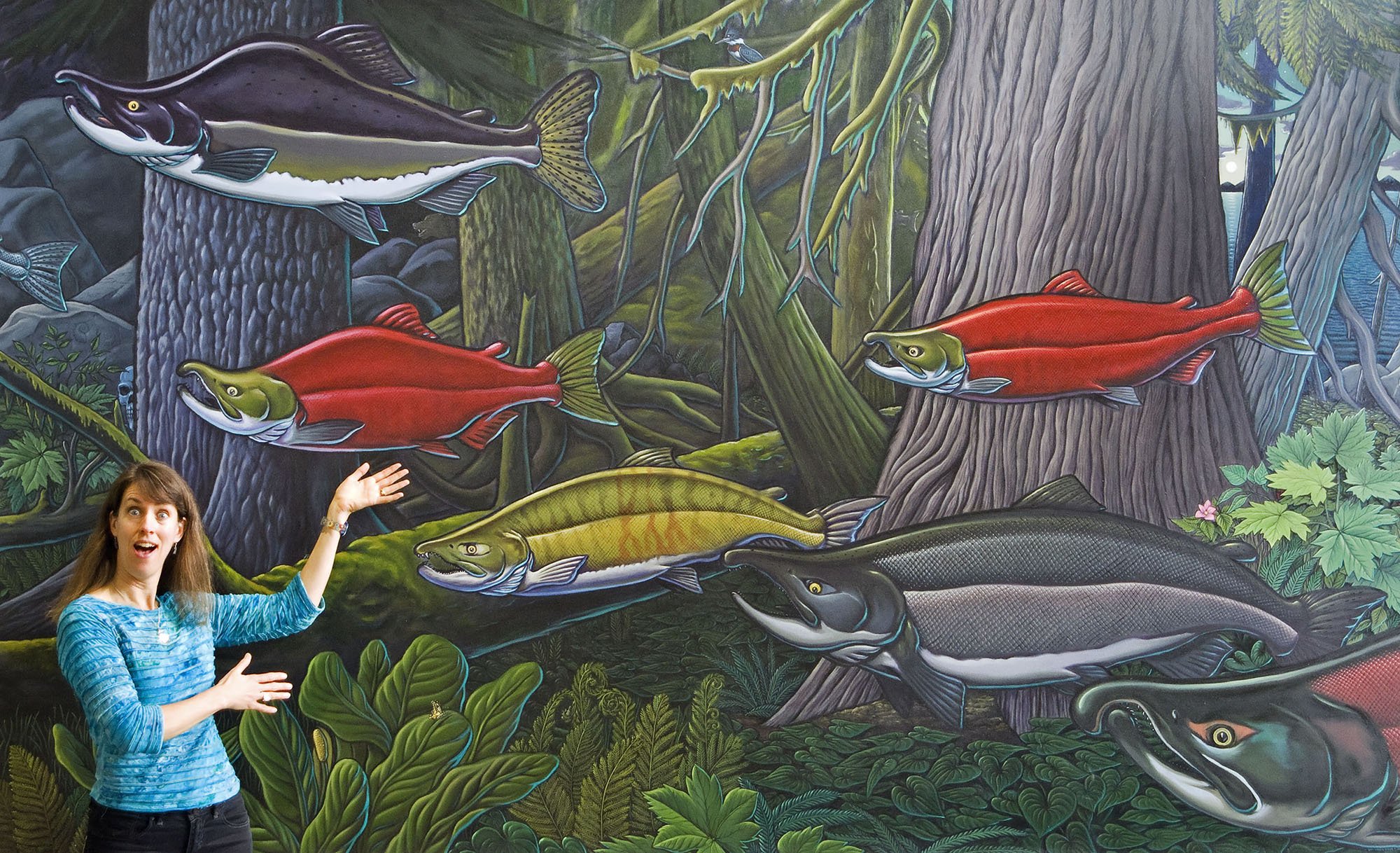Spark for Life
By Safina Center Fellow Amy Gulick
Amy and Carl Safina celebrate life on Earth at The Safina Center’s annual gala at The Explorers Club. ©Chris Gulick
What was the spark? This was the question posed to the Fellows of The Safina Center at the organization’s recent celebration in New York City. What was the spark that set us on our paths to advance the case for life on Earth? The answers were as varied as our work. But what we shared in common was that our sparks were ignited at a young age.
A young Amy shapeshifts in to a bear. ©Amy Gulick
As a child, I had a fascination with animals, particularly wild animals and the places where they lived. Monkeys and jungles, dolphins and oceans, frogs and forests, bears and mountains. Every Halloween, I shapeshifted into a critter with whom I felt a primal kinship. I also had a fascination with the people who lived alongside animals and I imagined myself living their ways of life in faraway places. African savannas, Arctic tundra, Pacific islands. I shared my adventures with anyone who would listen through stories and the drawings I made to illustrate them. Fast forward a few decades and not much has changed. My work consists of telling stories about the wildlife and people within ecosystems. I write books and magazine articles, and I give speaking presentations. And I use my photographs to illustrate the stories.
Amy shapeshifts in to a sea turtle at the World Trade Organization to protest global trade policies that harm wildlife. ©Amy Gulick
Much of my work for the past two decades has focused on wild Pacific salmon and the ways of life these remarkable fish make possible for wildlife and human communities. I use my work to educate decision makers and people most affected by the threats to salmon habitat, and to motivate people to take action to protect or restore habitat. After years of doing this work, I’ll let you in on a little secret: It’s not facts and statistics that fire up an audience to do something on behalf of wildlife and ways of life. It’s the stories. The story of how salmon are in trees. The story of an Alaska Dena’ina woman returning to her home stream every year, just as the salmon do. And the story of unlikely allies coming together to protect the world’s largest run of sockeye salmon. Stories of wonder, awe, and the beauty of the human spirit living in right relationship with our non-human kin.
I’ve been told many times by people who live in deep relationship with salmon that they consider the fish a gift. A gift to the land, water, animals, plants, and people. And when you’re on the receiving end of a gift, what do you do? You give thanks and you give back. Salmon people give back by sharing this gift with family, community, and those most in need. They give back by taking care of what takes care of them, making sure that salmon have what they need—clean, cool streams and rivers to spawn and rear, and a healthy ocean to mature. The same things we need. It turns out that what’s good for salmon is good for us. Salmon people live in relationship with the fish by seeing them as the gift that they are, and not solely as resources for the taking. Imagine a world where we all saw animals, trees, mountains, rivers, and the ocean as gifts. And lived in right relationship with all life on Earth.
Amy gives a talk about the remarkable ecological phenomenon of salmon in the trees, in front of the Deep Forest mural by Alaskan artist Ray Troll.
Amy Gulick, Safina Center Fellow, is the author/photographer of The Salmon Way: An Alaska State of Mind and Salmon in the Trees: Life in Alaska’s Tongass Rain Forest.
See: www.amygulick.com




